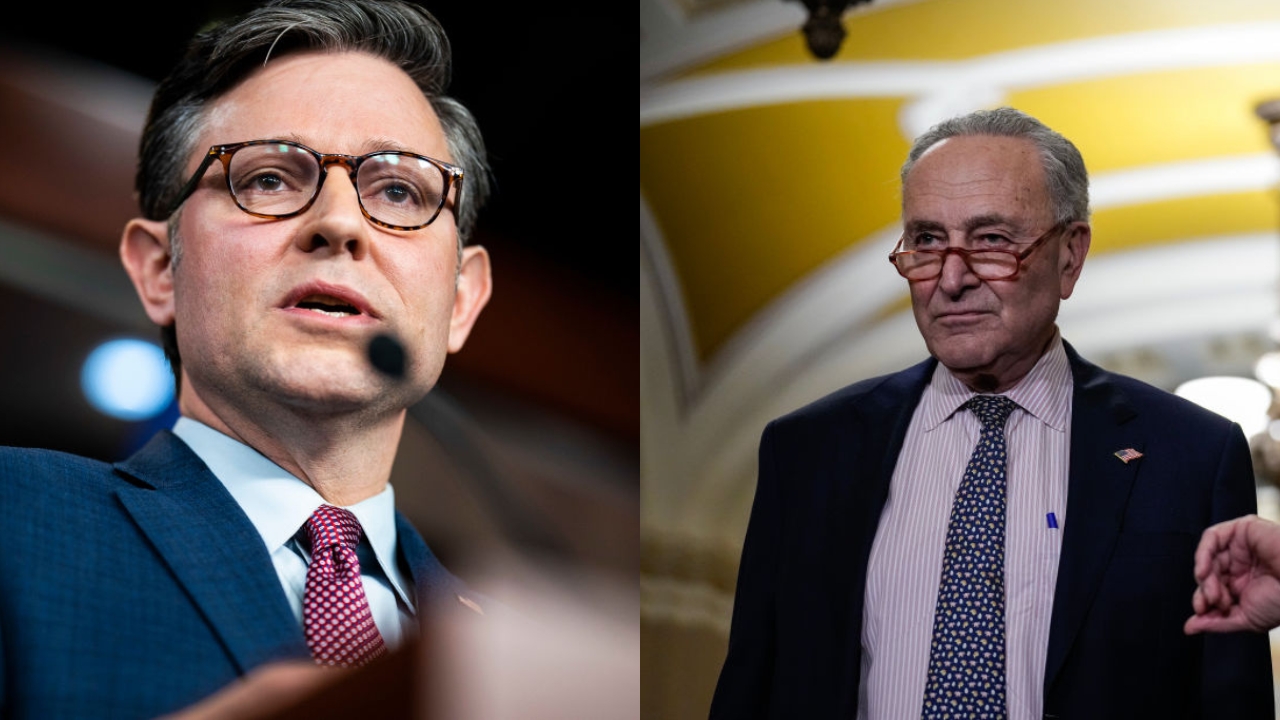Ten days from now, the federal government will be on the brink of shutting down.
Here’s where things stand: Speaker Mike Johnson, in his second full week leading the House, is heading to the Capitol basement this morning to discuss several options to avert a shutdown come Nov. 17.
Meanwhile, across the Capitol, it’s becoming increasingly clear that the Senate is setting the stage to jam the House with a massive omnibus-like bill around the holidays. This is exactly what House Republicans have said they want to avoid. Unfortunately for them, the Senate GOP doesn’t really care.
We’ll also note that this is Johnson’s first high-stakes negotiations as speaker. His predecessor, Kevin McCarthy, lost his post shortly after the House passed the last continuing resolution to avoid a shutdown. So Johnson must proceed cautiously to avoid the same problems with conservative hardliners that McCarthy and other GOP speakers had (see Boehner, John and Ryan, Paul.)
President Joe Biden, showing alarming weakness in the polls, would like nothing better than a showdown with an overreaching House GOP majority.
All set? Let’s talk about what Johnson is considering.
1) The laddered CR. Under this Freedom Caucus-pushed concept, the House would pass two stopgap funding packages. One would extend four relatively non-controversial spending bills until early December. The second package would extend funding for the other eight bills until mid-January.
In theory, this would force the House and Senate into a negotiation over all 12 funding bills. It’s also meant to prevent the Senate from sending an omnibus to the House ahead of the Christmas break.
Republican senators — even the most seasoned appropriators — had no idea what a “laddered CR” even was before Monday. They’re less than thrilled about it now that they know.
“It seems to me that you would just constantly be having programs and agencies stop and go, stop and go,” Sen. Susan Collins of Maine, the top GOP appropriator, told us. “And so I think that would increase the difficulty.”
2) Clean, with no supplemental. Another idea under consideration is to extend government funding until January — which Johnson pitched to Senate Republicans — but separately negotiate on the $100 billion-plus supplemental spending requests dealing with the border, Israel, Ukraine and Taiwan. This has the benefit of being a clean CR, which is easy for the Senate to accept. But leaving aside the supplemental money will be very tricky.
3) Negotiate with the Senate. One option that Johnson is floating internally — and it seems like the least likely to us — is to have House Republicans try to see if they can get a CR deal with the Senate while still working to pass individual spending bills.
Johnson is in the “I’m-going-to-change-the-way-things-work” phase of being a new speaker, so his goal today is to try to see which option here picks up the most support from his rank-and-file. Remember, the House GOP won’t pass a CR this week. All this is on the table for next week.
There are a few ways this can all work out. The House Freedom Caucus will likely be locked into the laddered-CR approach. It was their idea and they believe it helps fight the government funding dispute on their terms, not the Senate’s.
The most obvious outcome here — and Johnson’s leadership team recognizes this — is a clean CR with some extraneous provisions that the Senate could accept. Leading options on that front include the creation of a statutory debt commission or new border-security provisions, according to sources close to the process.
Over in the Senate. Several top Senate Democrats told us Monday that they’re looking to expedite passage of the remaining nine FY2024 appropriations bills by using a December CR deadline to ratchet up the pressure to pass them. This would mean passing a month-long funding patch before Nov. 17.
Of course, the first three-bill minibus took nearly two months amid GOP objections, so what makes senators think they can pass the rest in such a short period of time?
Some news: Top Senate appropriators and leaders in both parties are telling us they might need to package the final nine together into one “megabus,” if you will. While this isn’t preferable, Collins said, it would be different from an omnibus in that these bills have all gone through committee. And the nine-bill vehicle would presumably be subject to amendments. This wouldn’t go over well in the House, where GOP leadership would likely ignore it.
“I just feel like we keep losing time,” Collins said, noting she preferred to stick to the original plan of moving four separate minibuses made up of three bills. But Collins said the nine-bill approach would be “certainly an improvement” over an omnibus, which is drafted behind closed doors without an opportunity to amend it.
Senate Democrats are already pitching the December CR strategy publicly. Sen. Jon Tester (D-Mont.), a senior appropriator, said: “We damn well should get it done by December, and that should be something we commit to and stay here on weekends until we get it done.”
That would mean finishing all nine funding bills, the Ukraine-Israel-Taiwan-border supplemental, the farm bill and the FAA bill — all within a few weeks of legislation action.
In sum, confusion reigns and there’s a non-zero chance that the federal government will shut down next week.





